To apply acrylic paint over enamel paint, remove the glossy topcoat, sand the finish, apply primer, and apply the acrylic paint.
You can’t mix acrylic paint with enamel paint as both use different paint solvents (water and oil).
You can’t apply acrylic lacquer paint over enamel paint as it contains turpentine in its formula.
Does Acrylic Paint Adhere to Enamel Paint?
Acrylic paint doesn’t adhere to enamel paint as enamel paint is oil-based and prevents paint penetration.
Acrylic paint does adhere to water-based enamel paint as both use the same paint solvent (water) and are compatible.
Enamel paint is designed to cover building exterior and outdoor objects (or surfaces) so the paint is formulated with extra additives, such as UV-resistance, moisture-resistance, and extra paint pigments.
The glossy enamel paint finish produces a strong coating that prevents other paints from adhering to it. If you apply paint directly over it, it will peel off within a few days.
How to Apply Acrylic Paint Over Enamel Paint?
To apply acrylic paint over enamel paint, do the following things.
- Remove the Glossy Topcoat.
- Sand the Finish.
- Apply Primer.
- Thin Acrylic Paint.
- Apply Acrylic Paint.
- Seal the Finish.
The tools you need for this project are listed below.
- A Scrapper
- Rubbing Alcohol
- Chemical-Based Paint Stripper
- Synthetic Bristled Brush
- Fine-Grit Sandpaper
- Rags
- Latex Primer
- Acrylic Paint
- Oil-Based Sealer (Optional).
1. Remove the Glossy Topcoat
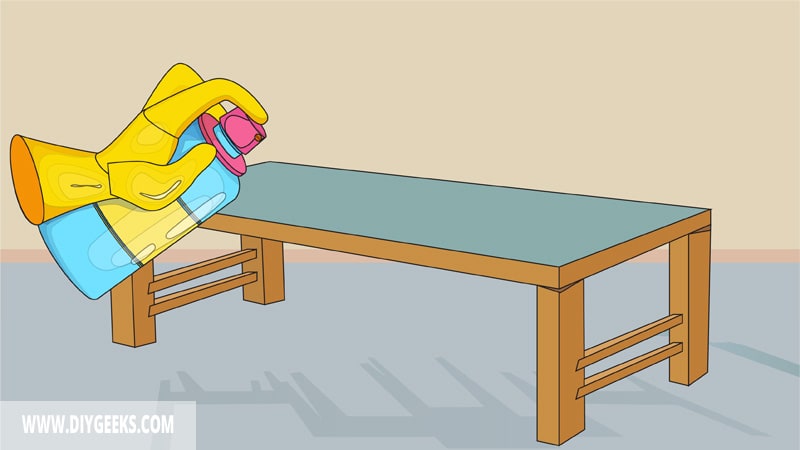
Oil-based enamel paint has a glossy topcoat that prevents paint penetration or adhesion. Remove the glossy topcoat to allow other paints to stick over it.
To remove the enamel paint glossy topcoat, do the following things.
- Scrape the Glossy Layer off – Use a metallic scraper to scrape as much paint as you can.
- Apply Rubbing Alcohol – Apply the rubbing alcohol to the glossy surface, leave it for 10-15 minutes, and scrape it again.
Rubbing alcohol contains isopropyl alcohol which is the active ingredient in the solvent that removes paints. Use rubbing alcohol that contains more than 70% isopropyl alcohol. If the concentration is lower than 70%, rubbing alcohol won’t remove the glossy layer.
Use chemical paint-strippers as an alternative as they are designed with chemicals that remove the glossy layer.
Note: Skip this step if you are painting over water-based enamel paint.
2. Sand the Finish
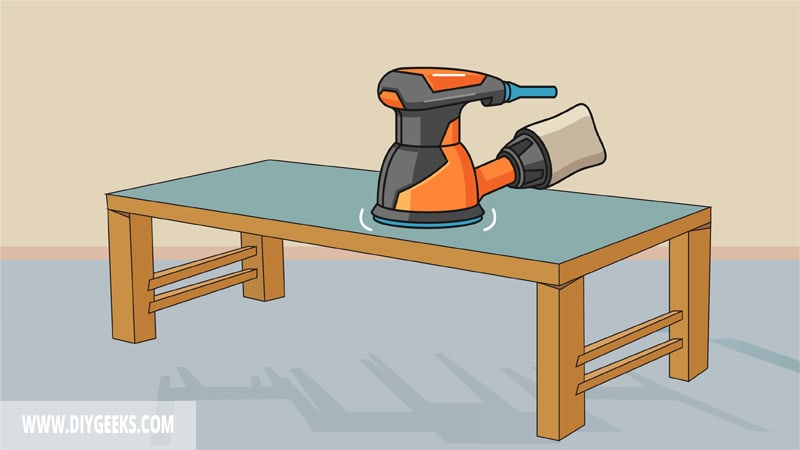
Sand the enamel paint finish with fine-grit sandpaper (220-grit) to remove imperfections and bumps, and smoothen the surface.
Use medium-grit sandpaper (100-grit) if the surface it very rough and you want to remove the existing finish.
3. Apply Primer
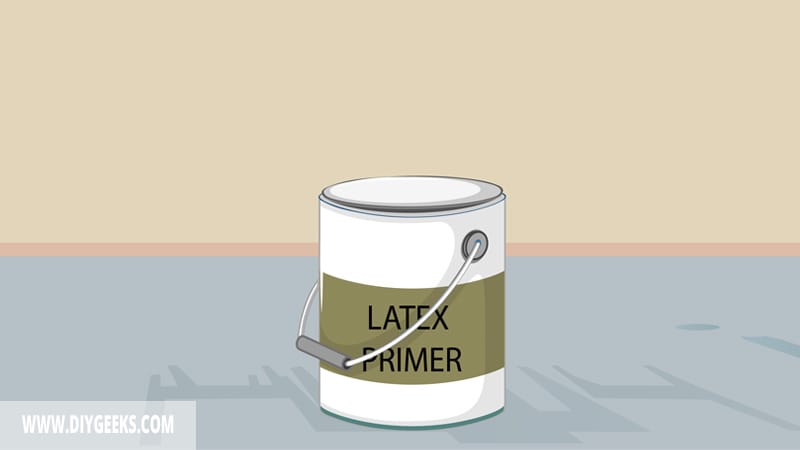
Paint primer will cover the surface imperfections, fill the holes, and provide a smooth and textured coating for the next paint.
Apply two (2) coats of latex or stain-blocking primer with a paintbrush. Wait until one coat dries before applying the next one.
4. Thin Acrylic Paint
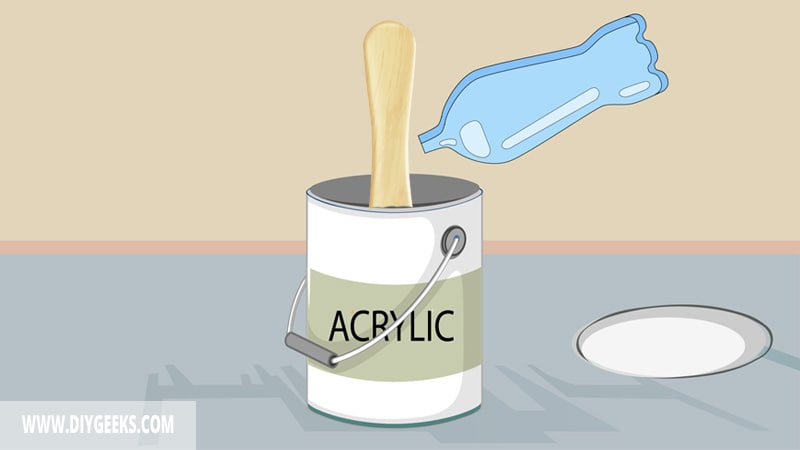
Acrylic paint has a thick flow, so you must thin it before applying.
To thin acrylic paint, do the following things.
- Measure how much acrylic paint you need.
- Pour it into a clean bucket.
- Thin acrylic paint in a ratio of 1:3 (1 part water to 3 parts paint).
- Stir the mixture until it has a consistent color.
5. Apply Acrylic Paint
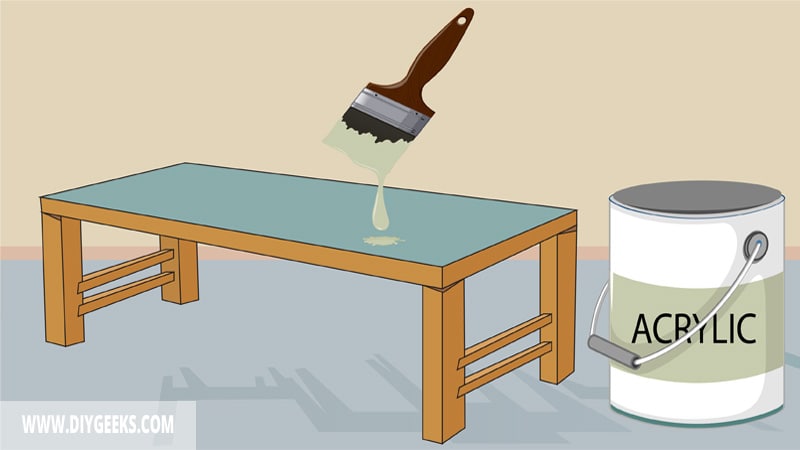
Apply two or three (2-3) acrylic paint coats over enamel paint with a paintbrush or sprayer. Wait until one coat dries before applying the next.
Sanding between coats is optional but it can help with paint adhesion.
6. Seal the Finish

Seal the finish if it’s placed outdoors with a water-resistant sealer, such as polyurethane. The sealer will produce a glossy and water-resistant layer over the paint and protect it.
Sealing indoor finishes is optional.
Can You Mix Acrylic Paint With Enamel?
You can’t mix acrylic paint with enamel paint as both use different paint solvents (water and oil) and aren’t compatible.
Acrylic paint uses water as its solvent while enamel paint uses oil as its solvent. If you mix them, the mixture will have a heavy paste-like appearance and will remain sticky for several days if you apply it.
You can mix acrylic paint with water-based enamel paint as both use the same solvent (water). Acrylic paint will add more pigments to the mixture while water-based enamel paint will add more durability.
Can You Apply Acrylic Lacquer Paint Over Enamel Paint?
You can’t apply acrylic lacquer paint over enamel paint as it contains turpentine (a thinning agent) in its formula which removes enamel paint.
The thinning agent (turpentine) will lift the enamel paint and ruin its finish if you apply acrylic lacquer over it.
Lacquers, by nature, aren’t designed to be used directly. They are usually sprayed, and since lacquer is too thick to be sprayed, you have to thin it first. Lacquer is thinned with turpentine or mineral spirits, both of these thinning agents will remove enamel paint.
However, you can apply acrylic lacquer over water-based enamel paint. Water-based enamel paints are thinned with water, so turpentine doesn’t affect it. But, the mixture will produce a color tint in the coating after a while, usually a yellowish tint.
Related Read: Can You Apply Enamel Over Latex Paint?
[sc name=”acrylic-over-enamel-paint”]


